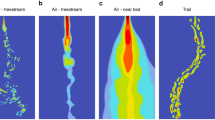Abstract
Pheromones presumably secreted by mating conspecifics – as well as homogenates containing tissue that is homologous with the atrial gland – increase the time that Aplysia fasciata spend feeding. This effect is caused by increasing the number of feeding episodes initiated in response to food, whereas the duration of a feeding bout remains unchanged. The increase in the number of feeding episodes is related to increases in head waving and crawling, i.e., appetitive movements that bring the animal into contact with food, as well as an increase in the responsiveness to food after it is contacted. Releasing a homogenate containing atrial gland tissue, or egg laying hormone, in the water near the animal elicited head lifting similar to that seen when animals are food aroused. The data indicate that the facilitation of Aplysia feeding caused by pheromones arises in part by an excitation of appetitive behaviors. These findings suggest that neurons generating appetitive behaviors will be affected by pheromones.
Similar content being viewed by others
Author information
Authors and Affiliations
Additional information
Accepted: 28 November 1997
Rights and permissions
About this article
Cite this article
Blumberg, S., Haran, T., Botzer, D. et al. Pheromones linked to sexual behaviors excite the appetitive phase of feeding behavior of Aplysia fasciata. I. Modulation and excitation of appetitive behaviors. J Comp Physiol A 182, 777–783 (1998). https://doi.org/10.1007/s003590050222
Issue Date:
DOI: https://doi.org/10.1007/s003590050222




